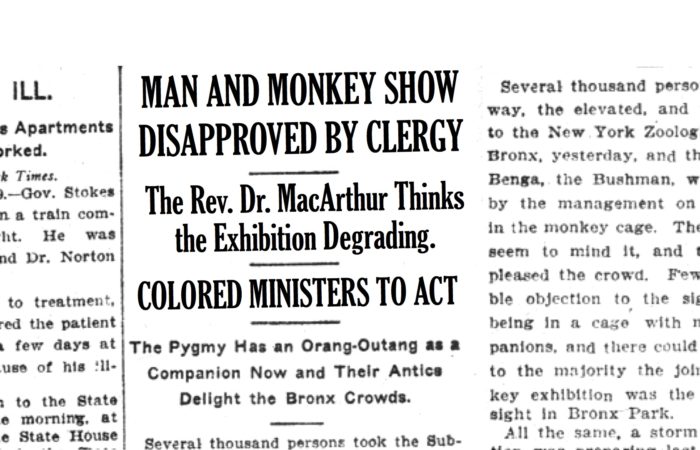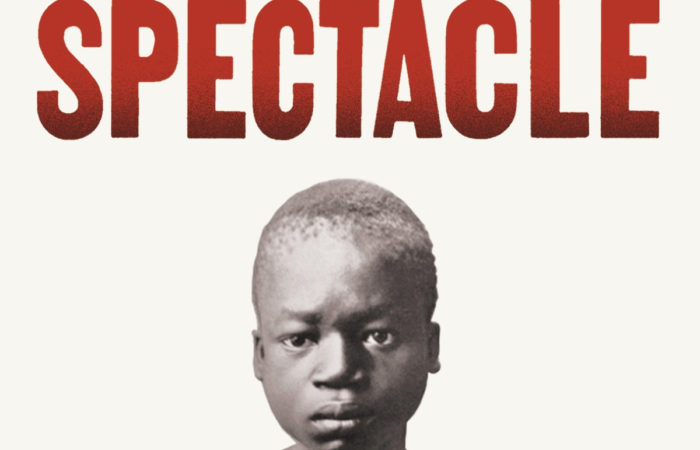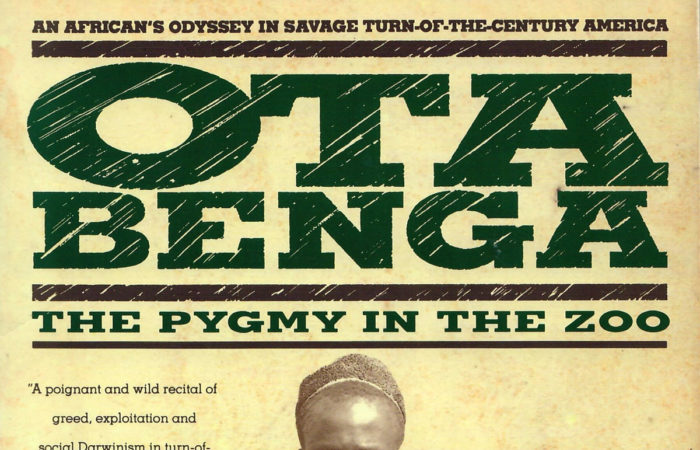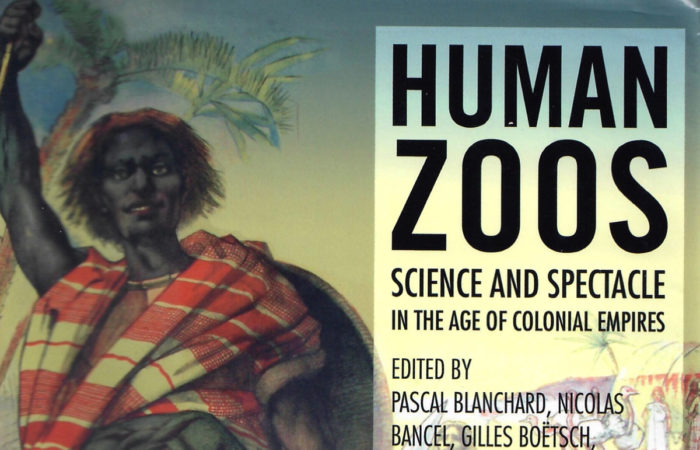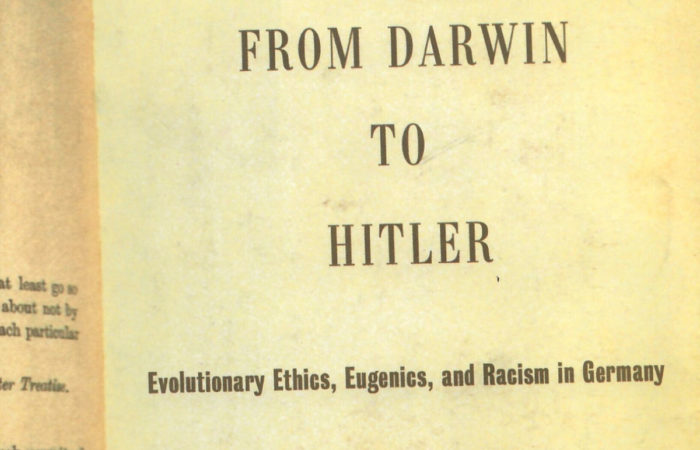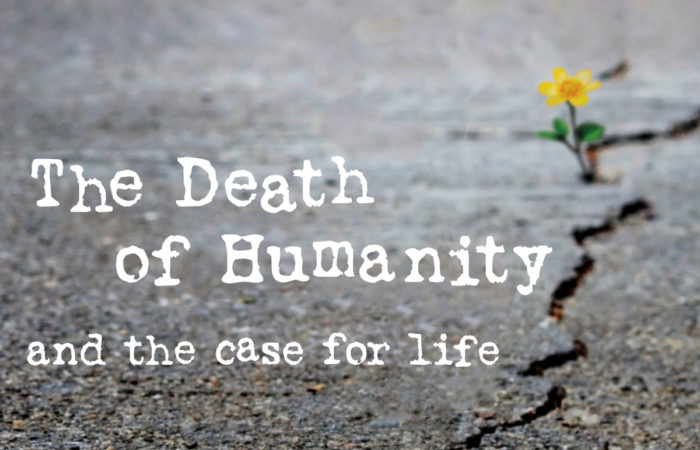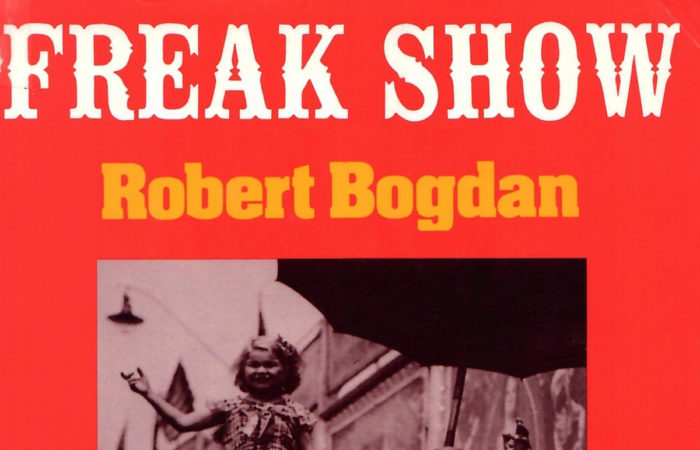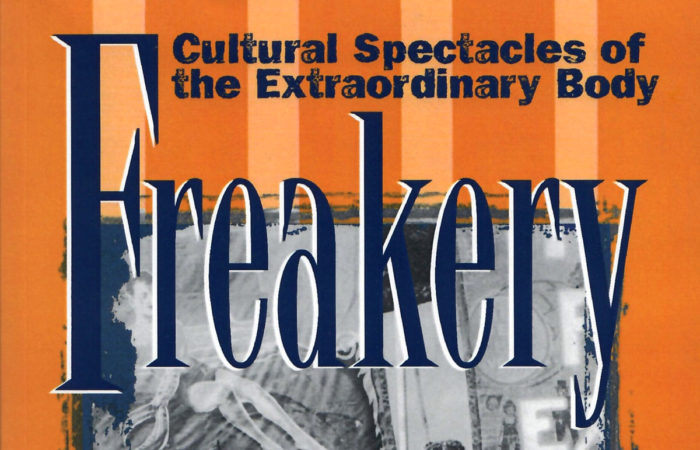
Aside
Clergy
Many members of New York’s clergy were horrified by the public display of Ota Benga in the Monkey House. First to speak out was the Rev. Robert Stuart MacArthur, pastor of the city’s Calvary Baptist Church, one of the largest Baptist congregations in America. One of the most articulate and determined critics of the zoo display was African-American minster James H. Gordon, Superintendent of the Howard Colored Orphan Asylum in Brooklyn.
For more information:
Spectacle: The Astonishing Life of Ota Benga by Pamela Newkirk (Book)
Original newspaper coverage:
“Negro Clergy Protest,” New–York Daily Tribune, September 11, 1906
“Man and Monkey Show Disapproved by Clergy,” The New York Times, September 10, 1906
“Negro Ministers Act to Free the Pygmy,” The New York Times, September 11, 1906
“The Mayor Won’t Help to Free Caged Pygmy,” The New York Times, September 12, 1906
“Still Stirred about Benga,” The New York Times, September 23, 1906
Media
New York’s most prominent newspaper—The New York Times—was largely unsympathetic to Ota Benga’s plight and even professed to be puzzled by the anger of those who protested Benga’s demeaning treatment. “We do not quite understand all the emotion which others are expressing in the matter,” editorialized the Times. Describing African pygmies as “very low in the human scale,” the Times made clear that it viewed pygmies as less than fully human. The editors at the Times also thought it “absurd to make moan over the imagined humiliation and degradation… [Ota Benga was] suffering.” In fact, they claimed the pygmy was “probably enjoying himself.”
After African-American ministers criticized the Zoo for trying to use Ota Benga to prove Darwinian evolution, the Times weighed in again. “To find that there are still alive those who do not accept” Darwin’s theory was “startling” according to the Times. “The reverend colored brother should be told that evolution, in one form or another, is now taught in the text books of all the schools, and that it is no more debatable than the multiplication table.”
For more information:
Spectacle: The Astonishing Life of Ota Benga by Pamela Newkirk (Book)
Original newspaper coverage:
“Send Him Back to the Woods,” The New York Times, September 11, 1906
“The Pigmy Is Not the Point,” The New York Times, September 12, 1906
“Ota Benga, Pygmy, Tired of America,” The New York Times, July 16, 1916
Spectacle
Spectacle: The Astonishing Life of Ota Benga by Pulitzer Prize-winning author Pamela Newkirk explores the tragic life of Ota Benga, who was put on public display in the Monkey House of the Bronx Zoo in New York City. A fascinating and well-written history. PURCHASE
Ota Benga: The Pygmy in the Zoo
Ota Benga: The Pygmy in the Zoo by Phillips Verner Bradford and Harvey Blume is another book exploring the tragic story of Ota Benga. Bradford was a descendant of Samuel Verner, the man who bought Ota Benga and had him put on public display. The book is provides additional information that is interesting, but it also is somewhat uncritical when describing the relationship between Benga and Verner. PURCHASE
Human Zoos
Human Zoos: Science and Spectacle in the Age of Colonial Empires is an edited collection of essays exploring the operation of “human zoos” in America and Europe during the past two centuries. PURCHASE
Darwin Day in America
Darwin Day in America by John G. West explores the wide-ranging impact of Social Darwinism in America on crime, economics, welfare, politics, medicine, education and more. PURCHASE
From Darwin to Hitler
From Darwin to Hitler: Evolutionary Ethics, Eugenics, and Racism in Germany by historian Richard Weikart traces the impact of Social Darwinism on the devaluation of human life in Germany up to the rise of national socialism. PURCHASE
The Death of Humanity
The Death of Humanity by historian Richard Weikart examines key ideas that have led to the devaluation of human life in contemporary society. PURCHASE
Freak Show
Freak Show: Presenting Human Oddities for Amusement and Profit by Robert Bogdan is one of the most comprehensive histories of freak shows, including the examples explored in the documentary Human Zoos. PURCHASE
Freakery
Freakery: Cultural Spectacles of the Extraordinary Body edited by Rosemarie Garland Thomson is a collection of essays exploring the practice of demeaning certain human beings as “freaks” and putting them on public display for entertainment and profit. PURCHASE
